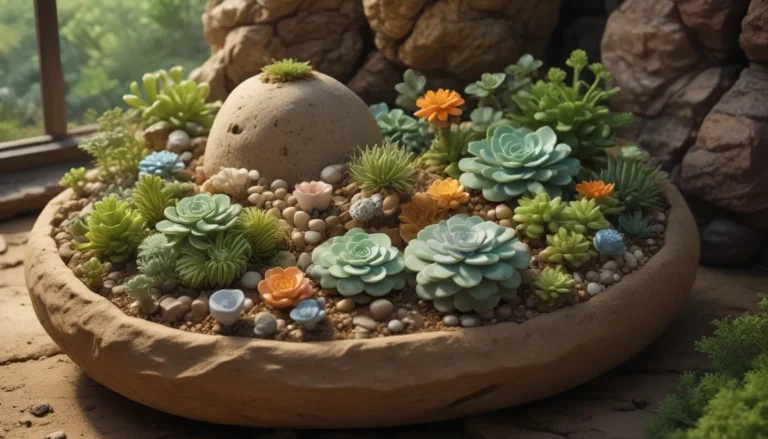An In-Depth Guide to Planting and Growing Aztec Sweet Herb

Are you looking for a natural, sugar-free way to satisfy your sweet tooth? Look no further than the Aztec sweet herb, also known as honeyherb, Mayan mint, or Mexican lippia. This unique herb offers an intensely sweet flavor that is perfect for those looking to avoid refined sugar. In this comprehensive guide, we’ll cover everything you need to know to successfully grow and enjoy Aztec sweet herb in your own garden.
What is Aztec Sweet Herb?
Aztec sweet herb, scientifically known as Phyla dulcis, is an herbaceous perennial native to Central America, the Caribbean Islands, and parts of South America. This plant, known to the Aztecs as “Tzopelic Xlhuitl,” features deep green, purple-green, or reddish-green lanceolate leaves with toothed margins. It produces clusters of small, white, clover-like flowers in the spring that are both edible and attractive to pollinators.
The key feature of Aztec sweet herb is its incredibly sweet flavor attributed to a compound called hernandulcin, which is 1,000 times sweeter than table sugar. Additionally, the herb contains camphor and limonene, giving it a minty aftertaste with a hint of bitterness. While primarily used for its medicinal properties, Aztec sweet herb has gained popularity as a natural sweetening agent for those seeking alternatives to sugar.
A Note of Caution:
Consuming high amounts of camphor, present in Aztec sweet herb, can be toxic. Use this herb sparingly, especially for children.
Cultivation and History
The Aztecs and other indigenous communities in Central America historically used Aztec sweet herb for both culinary and medicinal purposes. While primarily used in traditional medicine, modern applications of the herb include treating coughs, bronchitis, and hypertension.
Propagation of Aztec sweet herb can be done through various methods, including seeds, cuttings, division, and layering. The plant thrives in well-drained soil and full sun, making it ideal for a wide range of garden settings. Maintaining the plant is relatively low-maintenance, requiring occasional pruning and watering.
Aztec Sweet Herb Propagation
- From Seed: Starting Aztec sweet herb from seeds is a simple process. Sow seeds on the surface of a well-draining medium, keep them warm, and thin out seedlings once they emerge.
- From Cuttings: Take stem cuttings from established plants, root them in water, and transplant once roots have developed.
- By Division: Divide mature plants by separating stems and roots to create new plants easily.
- By Layering: Propagate the herb by layering stems in soil, encouraging root development for new plants.
Transplant seedlings or rooted cuttings into well-draining soil enriched with compost, and provide adequate sunlight for optimal growth.
How to Grow Aztec Sweet Herb
Plant Aztec sweet herb in full sun, in loose, rich soil with good drainage. Water the plant deeply when the soil is almost dry, and avoid overwatering to prevent root rot. While the plant can tolerate some drought, occasional watering during dry periods is beneficial.
Consider growing Aztec sweet herb in containers to control its spread, as the plant can be invasive if not contained. Regular pruning and pinching can help maintain the plant’s shape and encourage bushier growth.
Growing Tips
- Plant in full sun to encourage optimal growth.
- Work in well-rotted compost to improve soil drainage.
- Allow the soil to almost dry out completely between watering to prevent root issues.
Maintenance
Maintaining Aztec sweet herb is simple and requires minimal effort. Regularly remove dead or damaged branches, and consider giving the plant a light trim to manage its size and spread. Pinching the plant during growth can promote branching and enhance its appearance.
Where to Buy Aztec Sweet Herb
While Aztec sweet herb may not be widely available in nurseries, seeds can be purchased online from reputable sources. Consider sourcing seeds from online retailers to kickstart your Aztec sweet herb garden.
Managing Pests and Disease
Aztec sweet herb is relatively pest and disease-resistant, with aphids being a common pest that can be easily controlled. Monitor the plant for signs of aphid infestations and use water spray to remove them. Powdery mildew is a potential fungal issue that can be treated using natural remedies or fungicides if necessary.
Harvesting and Preserving
Harvest Aztec sweet herb leaves and flowers as needed once the plant has matured, typically after four months. Harvest by pinching off leaves or using scissors to trim them. Drying leaves and flowers is a common preservation method, with options to air dry or use a dehydrator. Frozen leaves can also be stored for later use in recipes.
Recipes and Cooking Ideas
Incorporate Aztec sweet herb leaves and flowers sparingly in recipes to add a natural sweet flavor with a hint of minty freshness. Use the herb in teas, salads, desserts, and beverages to enhance their sweetness without added sugar. Experiment with different culinary combinations to discover unique flavor pairings with Aztec sweet herb.
Quick Reference Growing Guide
- Plant Type: Tender herbaceous perennial evergreen
- Growth Rate: Fast
- Native To: Mexico and Central America
- Water Needs: Low
- Hardiness (USDA Zone): 9b-12b
- Exposure: Full sun
- Time to Maturity: 4 months
- Spacing: 12 inches
- Height: 12 inches
- Spread: 36 inches
- Family: Verbenaceae
- Common Pests and Diseases: Aphids, powdery mildew
Oh So Sweet
Aztec sweet herb offers a unique, sugar-free alternative for gardeners looking to add sweetness to their dishes and beverages. With its intense sweetness and fresh minty flavor, this herb is a versatile addition to any garden. Explore new ways to use Aztec sweet herb in your cooking and baking to enjoy its unique taste and health benefits. Share your favorite recipes and experiences with Aztec sweet herb in the comments below.
If you’re interested in expanding your herb garden, explore our guides on other herbs such as Anise, Lovage, and French Tarragon for additional inspiration.
Happy gardening and sweet herb growing!





